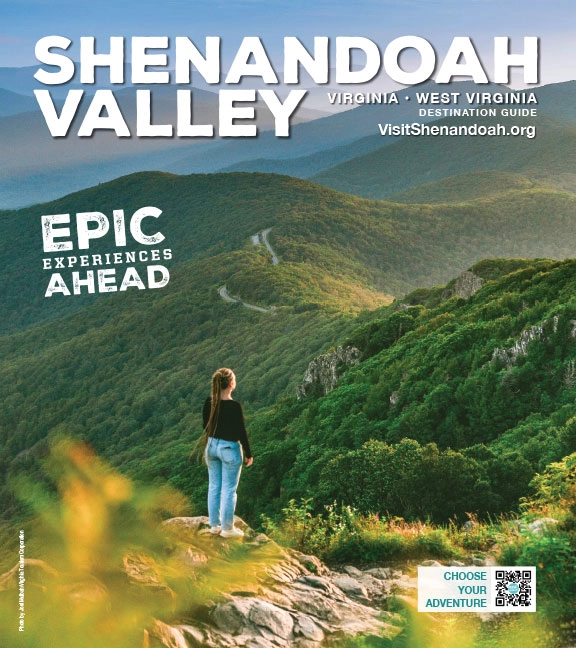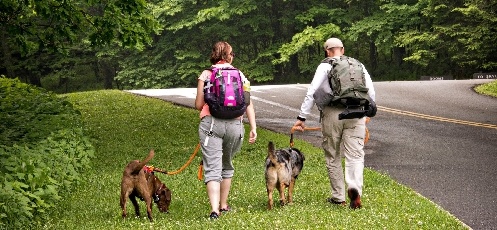While common sense and CDC guidelines both call for limitations on discretionary travel, there are still ways to experience the Shenandoah Valley safely. Hiking is generally regarded as a low risk for virus spread, as long as you do it alone or with someone from your household at a trail or park that isn’t crowded.
Shenandoah National Park announced a phased re-opening starting May 23rd. Phase 2 has begun and details may be found here.
Throughout the Valley, group hikes are discouraged, and flocking to the most popular footpaths like the Appalachian Trail are better left for the future. In fact, the Appalachian Trail Conservancy’s President and CEO Sandra Marra said at the beginning of the outbreak, “In these unprecedented times, I am making an unprecedented request: please stay away from the Appalachian Trail (A.T.). Whether your hike is for a couple of hours or a couple of days, staying away from the Trail minimizes the spread or contraction of COVID-19.” (Keep up with ATC’s updates here.)
But getting outdoors in a safe place has benefits, even now.
According to former CDC Director Dr. Tom Frieden, going outside and getting exposure to sunshine increases Vitamin D in our bodies, and may possibly boost the immune system–particularly of people whose Vitamin D levels are low.
So a solitary day hike or bike ride away from the crowds does not seem out of bounds. Go during the week if at all possible, and stick to the lesser-traveled trails.
With a total of 1.8 million acres to explore, George Washington/Jefferson National Forests make up one of the largest plots of public land in the eastern United States. Within its boundaries are 23 Wilderness areas and 1,925 miles of hiking trails. (The two forest were combined administratively in 1995.) Most of the forest lies within Virginia, but parts extend into West Virginia and Kentucky.
While the outdoor recreation possibilities are normally a laundry list of adventure, be aware that some closures are in place due to public health concerns over the coronavirus. Areas affected by closures — some of the most visited trailheads, access points to the A.T., campgrounds and recreation areas–are summarized here and here.
Even so, other trails remain open and dispersed camping is allowed.
The area is rich in Virginia history, too. Elizabeth Furnace in Fort Valley operated from 1836-1888 to make pig iron, which was hauled over Massanutten Mountain down to the Shenandoah River and from there to Harpers Ferry. The path over the mountain is still used today by those who hike on the Massanutten Trail. Much of the original stone furnace still exists. Catherine Furnace in Newport served the same function, and is listed on the National Register of Historic Places.
While these national forests can be heavily visited at times, you will generally find fewer people than in a national park. Some map study can result in finding trails where you may indeed see nobody, especially during the week. One of hundreds of possibilities is the Laurel Run Circuit, about 10 miles north of Basye. It’s a nine-mile loop, usually rated “difficult.” Parts of it are steep and rocky but the views are rewarding. Keep in mind that trails in national forests may not be as well-marked as those in national parks. Take a paper map, as GPS devices can be spotty in some areas.
Visit George Washington and Jefferson National Forests website for more information and updates on campground openings and closures.
Editor’s Note:
If you explore your area trails, be sure to be responsible and maintain a distance of at least six feet between yourself and others. Trails can be narrow and maintaining distance while passing one another can be tough. One clue as to how much traffic is on the trail is to observe the trailhead. If you see several cars, you might want to wait or try another trail. We’re in this together.
Banner photo courtesy Neal Lewis/NPS





